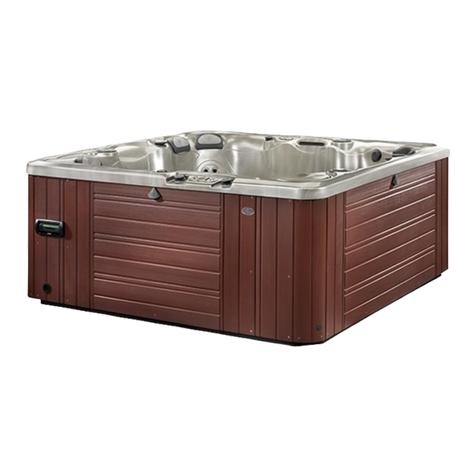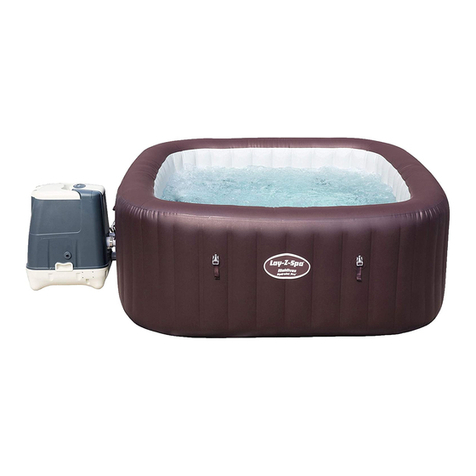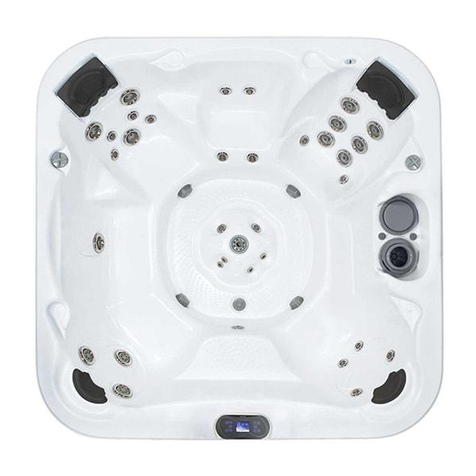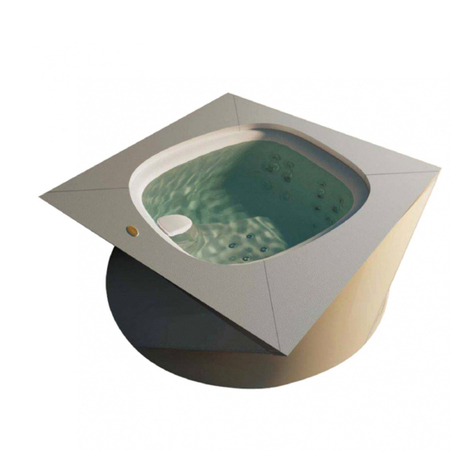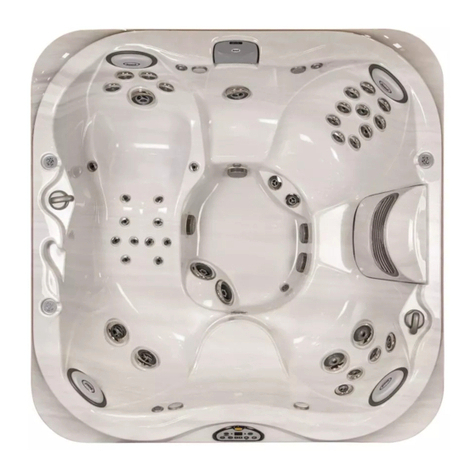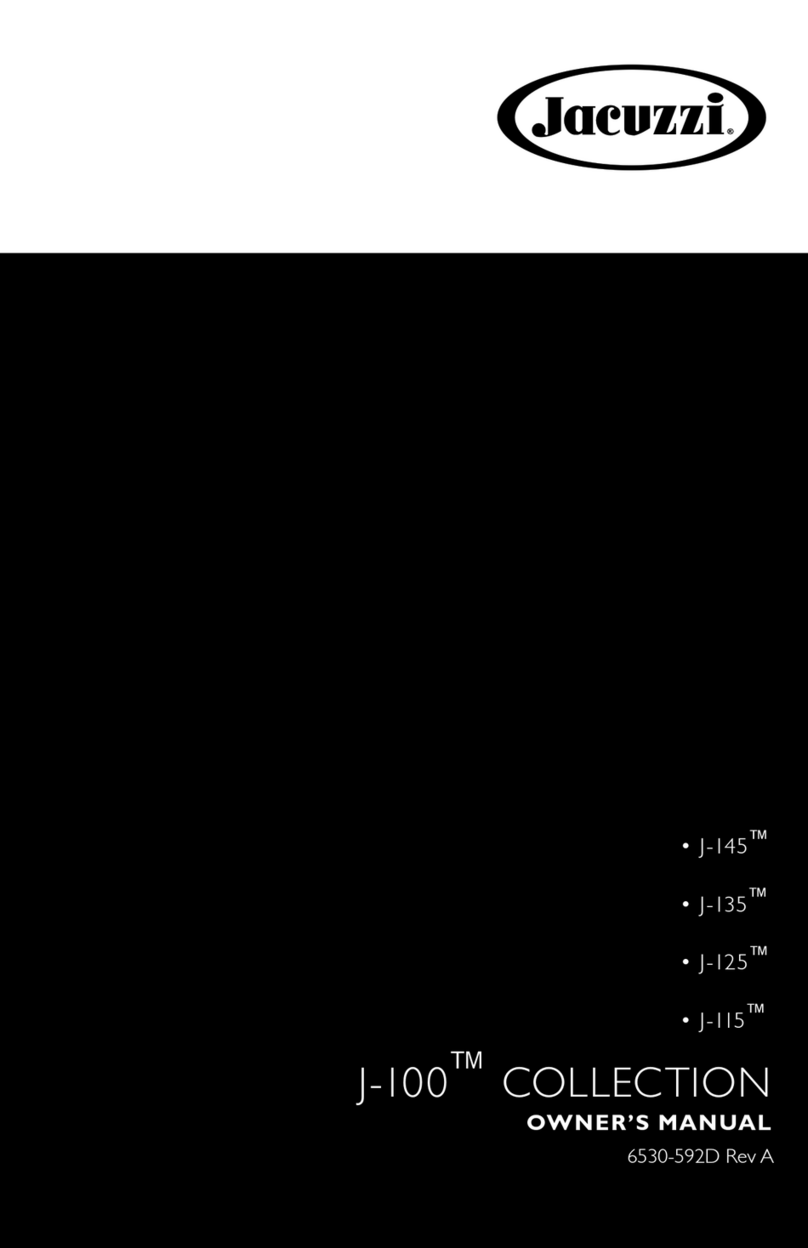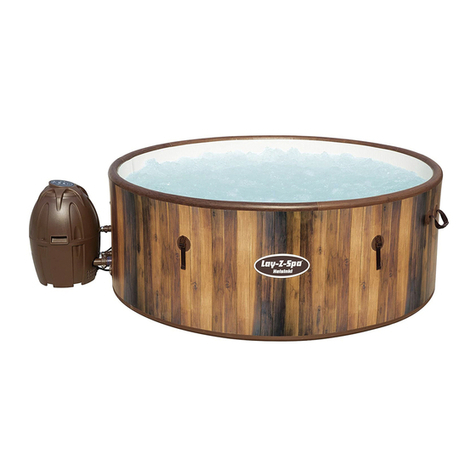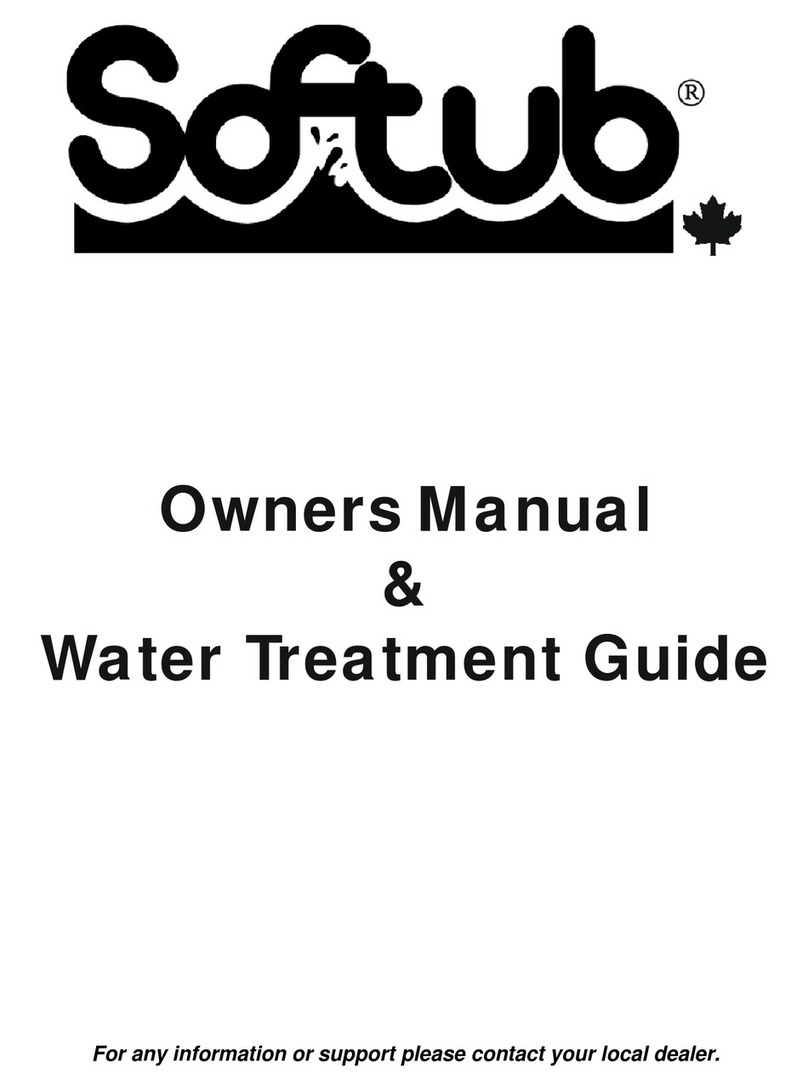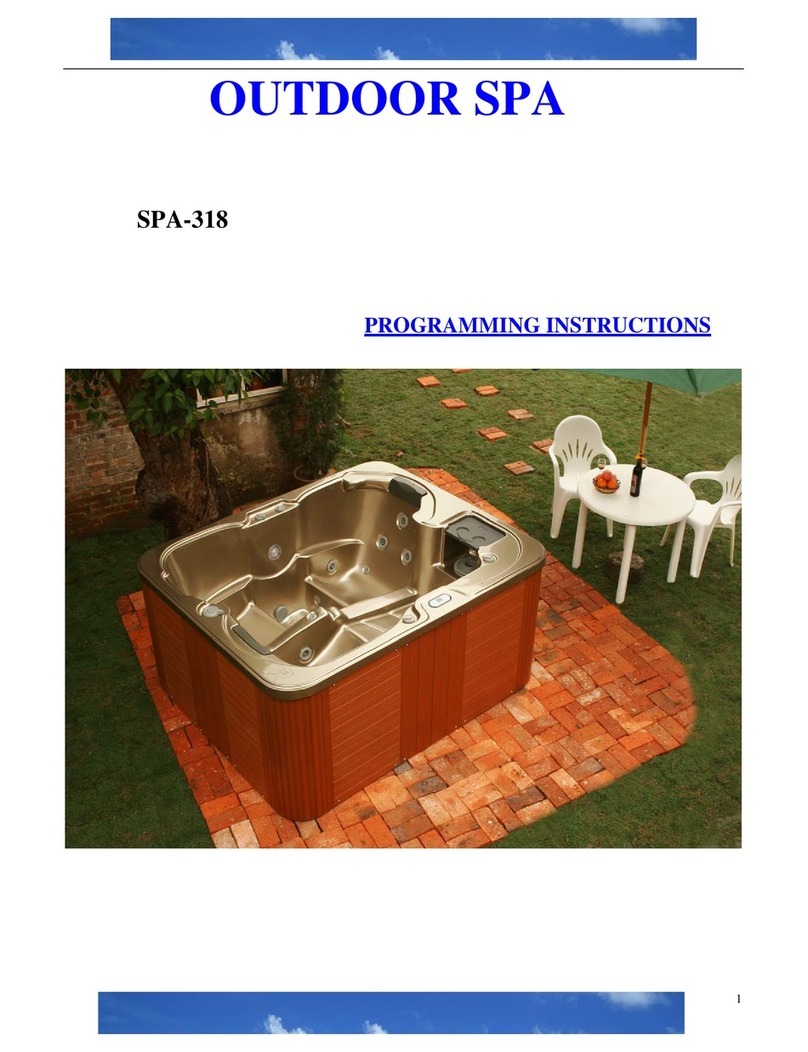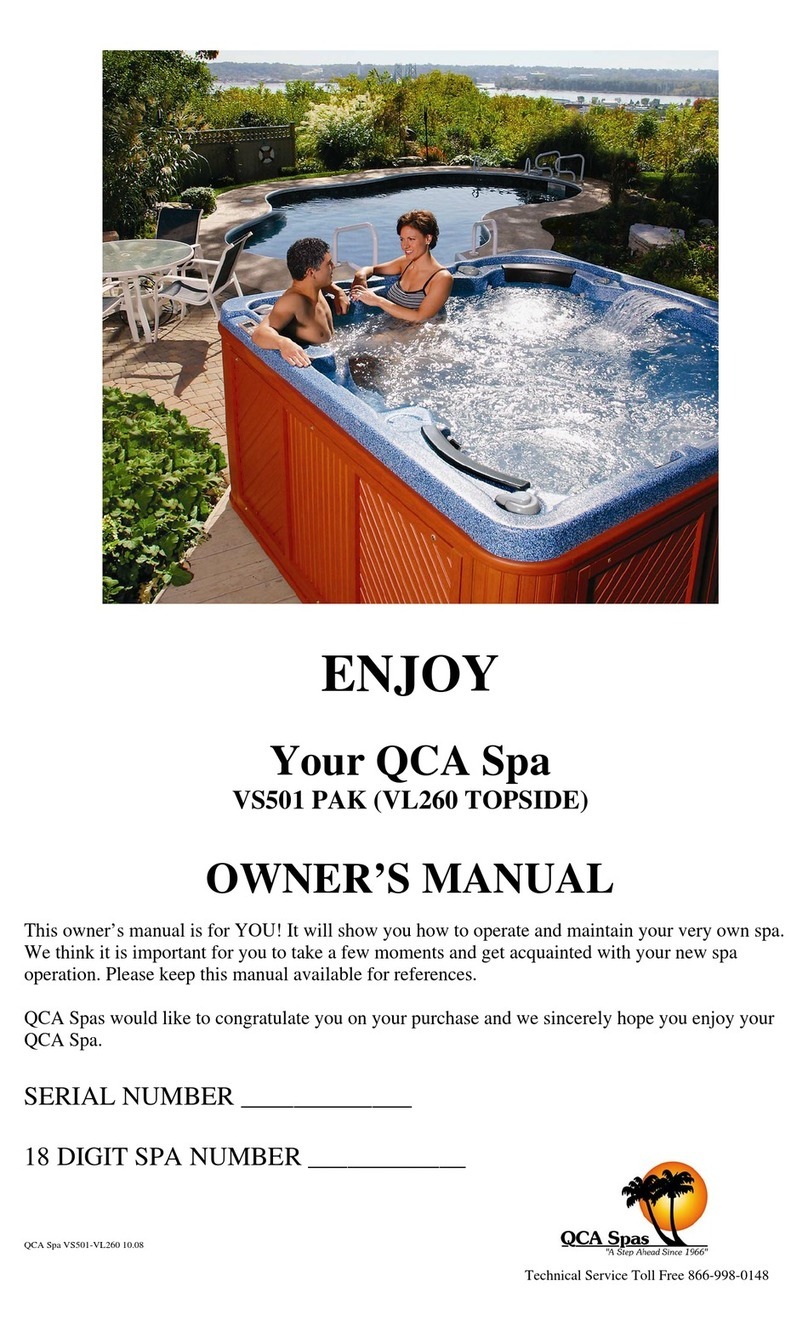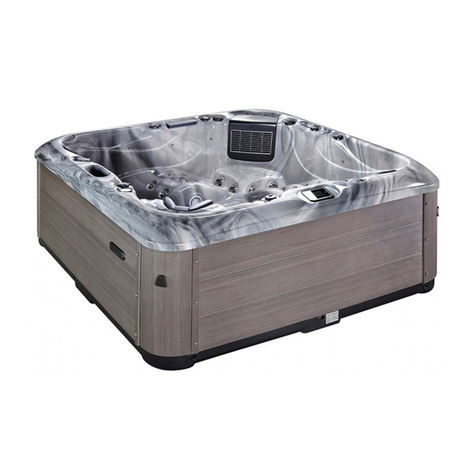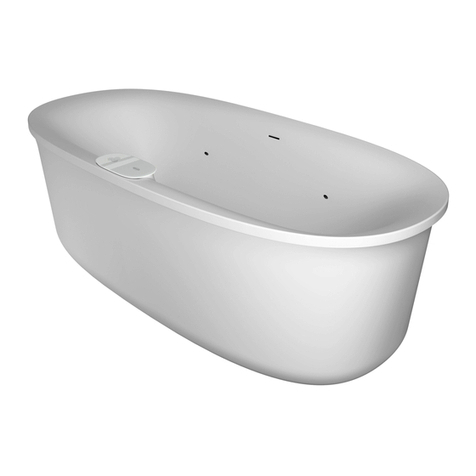
9
The swelling rocess continues for at least two weeks. It
is normal for a wood tub to dri a small amount of water.
Included with your tub is a bag of fine cedar sawdust. If
you have a ersisting leak after two weeks you can use this
sawdust to seal the tub.
Important: if you hooked up a filter, remove the cartridge
from the filter during this procedure, otherwise it will
clog.
Drain the tub and s read a cu or two of fine sawdust on
the floor of the tub, or alternatively, use a little water to
make a eanut butter-like aste of the sawdust and smear
some directly on the area that is leaking. Refill the tub.
As the water is added, the wood flour will be naturally
drawn to laces where the water is see ing out and
accelerate the swelling and sealing of the tub. The
sawdust is harmless and the excess will be flushed out the
first time you drain and rinse the tub. Note: It may take
more than one treatment to slow or fix the leak, but this
method works in almost every case.
The natural oils and tannins in cedar (es ecially red cedar)
will cause the water to turn tea-colored when the tub is
new. This is normal and harmless. The sweet aroma of
cedar is due to these oils. You may want to change the
water frequently at first to hel clarify the water. This
effect will diminish with time.
Section 13: Tub Safety
Your tub will give many years of enjoyment. Please note
the following general safety oints:
1. Tub safety is your res onsibility.
2. Never allow unsu ervised children to use your tub. Be
sure that a res onsible adult is in control at all times. IT IS
YOUR RESPO SIBILITY TO PREVE T ACCIDE TAL
DROW I G.
3. Hot tubs are for sitting only. Do not allow diving or
horse lay.
4. Children should use the tub at lower tem eratures
than adults. Consult your hysician for advice on hot
tubbing for children, regnant women, eo le with heart
conditions, or you have other s ecific questions
concerning health and safety.
5. Consult your hysician about recommendations
regarding your ability to soak and at what
tem erature. Never soak in water warmer than 104
degrees Fahrenheit.
Section 14: Tub Maintenance
Your tub should last for many years and require little
maintenance. Here are a few recommendations.
Kee the tub filled whenever ossible. Remember that a
wooden tub is a dynamic object and the wood will swell
and shrink with ex osure to water or lack of it. Like a
wooden boat, it will see water at first, then swell shut.
Leaving the tub unused for extended eriods of time. If
you need to leave the tub unused while on vacation or for
other reasons, drain most of the water out leaving about
3 inches in the tub. Drain the heating system including any
filters or um s in the system. Secure the cover on the
tub and wra the tub with a tar to rotect it and revent
excessive drying.
The worst thing for a wooden tub is to let it dry out. Kee
the tub filled whenever ossible. This kee s the wood
from drying out, shrinking and o ening u the seams. If
you need to drain the tub in cold weather or when you
are away for an extended eriod, leave about 3 inches of
water in the bottom so the floor seam will not dry out.
The tub will not be ermanently damaged by drying out,
but will have to swell again to hold water.
If the tub does dry out, you can check to see if the
com ression stra s can be tightened u a bit. Tighten the
bottom stra first, then the u er ones. Do not over
tighten the u er stra s - they do not get tightened as
much as the bottom one. EVER tighten the stra s when
the tub is full of water!
Freezing: Never let the tub freeze solid when full of
water!!! Since water ex ands when frozen, this will ut
enormous strain on the bottom, sides, hardware and
heating system. If you are going to be away during
freezing weather, or you want to shut your tub down
during a cold sna , follow these ste s:
1. Drain the tub down to about 3 inches in the
bottom. This amount of water will not cause freeze
damage and will kee the floor seam tight.
2. Drain all arts of the heating system. This includes
heater, i es, and anything you might have added
such as um , filter, etc.
3. If ractical, disconnect and store the heater in a
warm dry lace
If your tub develops a significant leak:
Follow
these ste s in order. If the first on doesn’t work, go on to
the second, and so on.
1. If your tub develo s a leak (not just a dri ) that it
didn’t have before, something has changed. Do
some investigation to discover the cause. The most
common causes are the tub drying out after being
em ty for a eriod of time, or the su ort for the
